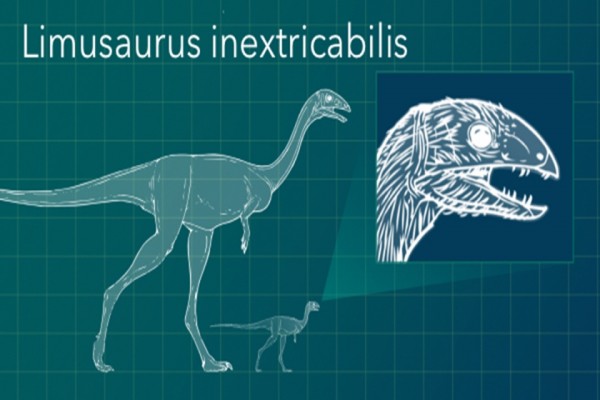By Ana Verayo, | December 27, 2016

Scientists discovered these fossils in Xinjiang Province, China. (YouTube)
Scientists have revealed a new dinosaur species that possessed razor sharp teeth as a baby but later developed into an almost toothless adult, preferring a plant based diet.
In this discovery, a team from George Washington University uncovered 19 fossilized skeletal remains of the Limusaurus inextricabilis, showing that juvenile dinosaurs had skulls full of sharp teeth. However, when these creatures became older, only a few of those teeth remained. Among the fossils, the one that had the least number of teeth was a 10-year-old specimen.
Like Us on Facebook
Scientists discovered these fossils in Xinjiang Province, China. The unfortunate dinosaurs were caught in a death trap of mud and quicksand. The dinosaurs, which measured about two meters long from the head to tail, experienced numerous developmental changes and later transformed into herbivores when they got older in life.
According to the co-author of the study, biologist James Clark from the Columbian College of Arts and Sciences at George Washington University, adults have beaks and very weak hands with virtually no claws. They also had rocks inside their stomachs like modern birds that eat grains and plants.
According to the co-author of the study, Shuo Wang from the Capital Normal University in Beijing, China, it was difficult to differentiate if these dinosaurs were undergoing dramatic developmental changes as they become older, or whether they were from a totally different new species.
After confirming that these fossilized remains were of the same species, the team analyzed the bones to identify what they were eating using stable isotope analysis. Carnivorous and herbivorous animals apparently possess different isotope ratios in their bones.
They compared these young and old dinosaur remains to a member of the Tyrannosaur family and a sauropod and found out that the younger Limusaurus inextricabilis had bone composition more similar to the tyrannosaur relative whereas the older ones were more comparable to the sauropod.
Modern animals such as the platypus lose their teeth when they get old but this is still considered as a very rare development in animal evolution.
Clark added that changing diets in younger animals to adult ones are very common, however, the transformation of the feeding apparatus itself from infancy to adult is so rare that they are only seen in tadpoles and frogs today but never in reptiles.
This new study was published in the journal Current Biology.
-
Use of Coronavirus Pandemic Drones Raises Privacy Concerns: Drones Spread Fear, Local Officials Say

-
Coronavirus Hampers The Delivery Of Lockheed Martin F-35 Stealth Fighters For 2020

-
Instagram Speeds Up Plans to Add Account Memorialization Feature Due to COVID-19 Deaths

-
NASA: Perseverance Plans to Bring 'Mars Rock' to Earth in 2031

-
600 Dead And 3,000 In The Hospital as Iranians Believed Drinking High-Concentrations of Alcohol Can Cure The Coronavirus

-
600 Dead And 3,000 In The Hospital as Iranians Believed Drinking High-Concentrations of Alcohol Can Cure The Coronavirus

-
COVID-19: Doctors, Nurses Use Virtual Reality to Learn New Skills in Treating Coronavirus Patients







